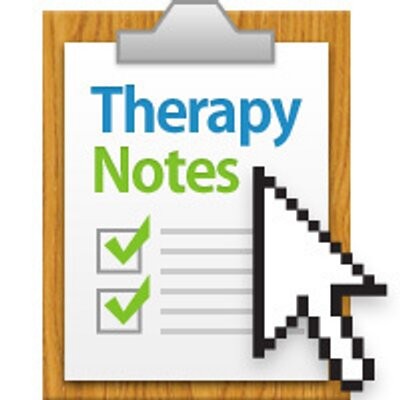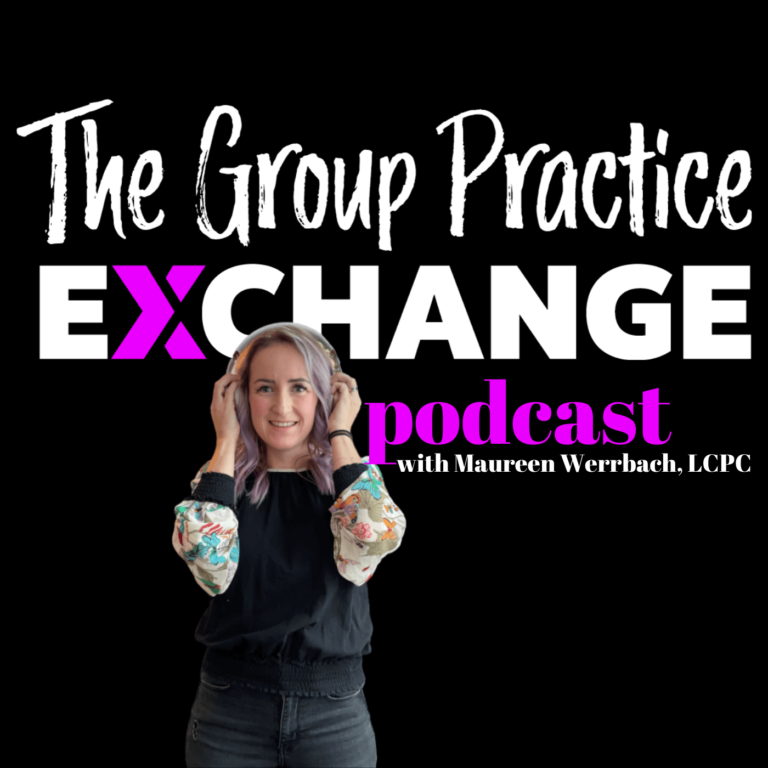Post Views: 355
- Home
- Podcast
Episode 220 | The 5 A’s of Accountability: Assemble

WITH MAUREEN WERRBACH
00:00
00:00
- Episode 220 | The 5 A’s of Accountability: Assemble 00:00
Share
Is your staff clear on what their role and function is in your practice? If not… that could be hindering your growth and success.
In this second episode of the six-week Accountability Equation™ podcast series, I focus on the first A of the five A’s, which is “assemble”. I explain how assembling the right team and clearly defining roles and responsibilities is crucial for setting up accountability in your practice. I even provide an overview of a helpful matrix that outlines the core responsibilities for each role in your business. Join me as I discuss:
- The difference between roles and functions: Roles are specific positions in the organization with their own set of responsibilities and expectations, while functions are the tasks and responsibilities within those roles.
- Why job titles and organizational charts are not helpful in providing clarity and understanding of responsibilities.
- The core roles and functions of a group practice including: visionary, integrator, sales and marketing, operations (administrative, HR, clinical), finance, and DEI.
- Steps to avoid building roles and functions that keep you stagnant by envisioning where your business should be, rather than where it currently stands.
- How spending time in the assemble phase helps clarify roles, reduce confusion, and promote collaboration and teamwork.
Don’t start setting up your accountability system in your practice without first understanding this stage. This step is crucial as it provides clarity to everyone in the practice about their areas of authority.
Thanks for listening! Like what you heard? Give us 5 stars on whatever platform you’re listening from. Need extra support? Join The Exchange, a membership community just for group practice owners on our website www.thegrouppracticeexchange.com/exchange. Talk to you next time!
Resources mentioned in this episode:
The Accountability Equation™ Program
Connect with Maureen Werrbach & The Group Practice Exchange:
This episode is sponsored by TherapyNotes. TherapyNotes is an EHR software that helps behavioral health professionals manage their practice with confidence and efficiency. I use TherapyNotes in my own group practice and love its amazing support team, billing features, and scheduling capabilities. It serves us well as a large group practice owner.
Do you ever wish for a financial therapist who could relieve you from the last few months of bookkeeping, talk you off the edge when you’re running into issues with Quickbooks, or help you work through a profit plan for growth? GreenOak Accounting does just that! GreenOak Accounting is an accounting firm that specializes in working with group practices. Their value goes WAY beyond bookkeeping; they can help you get on track for financial success. Schedule a free consultation by going to http://greenoakaccounting.com/tgpe
Transcript:
Maureen Werrbach
Today is episode two of our six week podcast series on the accountability equation where we have weekly episodes for the next six weeks that give you insight on how to set up accountability in your practice. So last week I discussed what the concept of the accountability equation is. So if you didn’t listen to that, stop here and go back one episode and listen to that. It’s episode 219. It’ll talk about what the concept of the accountability equation is, what differentiates it from other accountability programs that are out there, and it talks about our core concept, which is called the five A’s. So this week we’re going to be talking about the first A of the five A’s and that’s assemble.
So this section begins your accountability building journey with creating all of the roles and functions within your business. You’ll look at this from the perspective of where your business should be, not where it currently is. If you try to assemble your roles and functions based on where you currently are, you run the risk of building out roles and functions that keep you stagnant, ones that feel less risky to you because they keep the status quo or you’re creating only minor changes so that you can keep your current situation and maybe the current people in leadership where they are without making them upset.
So this is typically happening because we’re afraid to make our teams upset with change And instead we try to create roles and functions that have specific people in mind, usually those that are already in leadership roles, rather than taking the human element out of the equation and building out roles and functions that are actually in alignment with the vision of our organization.
So what are roles and functions? They’re positions and responsibilities that are necessary for a business to reach its goals. Roles are specific positions in an organization that have their own set of responsibilities and expectations. They are not job titles. Job titles don’t tell the story of the role that the person plays in an organization and what responsibilities fall within those titles. They’re obscure. What one organization calls a clinical director, another practice can call a supervisor. We’ve all seen this, right? A role, along with its functions, the responsibilities that are within that role, give a much clearer picture of what gets done and gives everyone an understanding of who’s responsible for what.
So essentially we’re doing away with organizational charts and replacing them with roles and functions in this section of the accountability equation. I’ve already mentioned how job titles are not helpful when it comes to providing clarity and understanding of the responsibilities of your team. And the same is true for organizational charts. It’s a widely accepted concept in the field of organizational development that roles and responsibilities are a better indicator of an organization reaching its goals than this hierarchical organizational chart. So this approach helps to clarify roles, it reduces confusion, and it promotes collaboration and teamwork.
In the accountability equation, we do away with the traditional org charts and we replace them with what we call the roles and functions matrix. In order to build your roles and functions matrix, we have a whole agenda that we’ve created in the program that helps you build it. But essentially what you’ll find is that the core roles and functions are visionary, right? The visionary in the organization is usually the leader or the founder. This is the person who can see the big picture and articulate a compelling vision for the future. This person is also often responsible for setting the overall direction and strategy for the organization and inspiring others to share in that vision. I believe as leaders that we need to step out of the day-to-day functioning of the business and step into the visionary role because that’s where the magic happens.
Another important role is then the integrator. And the integrator is a person or a role who’s responsible for bringing together all the different departments and the functions within those departments to make sure that they’re working together effectively and towards a common goal. The integrator role involves coordinating and aligning the efforts of different teams and individuals, managing conflicts, resolving issues, and promoting collaboration and communication across the organization. The term, if you haven’t heard, of integrator was popularized by Geno Wickman in his book Traction. He saw a pivotal role in the integrator role in bringing the goals of an organization to fruition and it really complements the visionary role very beautifully.
Aside from that, the core roles and functions that you’ll see are in sales and marketing. In operations, I split it up across three operations, administrative operations, HR operations, and then clinical operations. And then we have finance and DEI as the core roles in addition to visionary and integrator.
And so in the accountability equation, we dive deep into what all of those roles are and any sort of sub-rules that might fit into each of those core functions. And so what’s really interesting as you start to then build your roles and functions matrix is that you realize that you might have multiple people that are in the same role. And multiple people cannot be accountable for the same thing because if multiple people are accountable to the same role, they will finger point to each other and say, I thought this other person did it, right? It’s okay for multiple people to do tasks within a role. So maybe you have one role and a lot of tasks within it. And you might have different people that do different tasks, but one person has to be accountable for the success of that role as a whole.
As your business grows, you’ll be able to see more easily which roles need a person to lead it. And if you’re a small practice, you might notice that your name shows up on most of the major roles in your group practice and that’s totally fine. What will happen is as you grow, you’ll notice that there’s certain roles and functions that you want to first let go of and it becomes very easy to see what person you need that can fill that gap.
So when thinking about assemble, you know you have opportunities to grow in the assemble phase of the accountability equation if you don’t know who owns what responsibilities in your practice. It’s not clear. Nobody knows who’s responsible for what. Communication is lacking or it could be better. Some members are duplicating efforts. Maybe multiple people, too many cooks in the kitchen, right? Things aren’t getting done because no one knows who’s responsible for the tasks or everyone feels like they’re wearing too many hats. This typically means that you have some work to do in the assemble phase of the accountability equation.
And we’ve got a ton of work in the program that helps you kind of get out of that and function to matrix that really helps your business move forward and provides the clarity that the clinicians in your practice needs to align with that vision and those values. So take some time to work on your roles. Think about the roles that are in your business and who’s in them right now and see do they align with the overall vision of your practice.
In recap, the main point for today’s episode is to talk about assemble, the first A of the five A’s in the accountability equation. And essentially in assemble, we assemble a roles and functions matrix that says what the core roles are in your business and what their main responsibilities are. What’s important about this is it provides clarity to everyone in the business who’s in charge of what, but it also will serve as a tool later in the accountability equation when we start to build our accountabilities. We are going to look back at the responsibilities in this chart to see what accountabilities align with what they’re responsible for. So it’s really important to make sure that you have a matrix that really outlines the roles and core responsibilities for each of those roles.
So as we end this episode, if you haven’t already, go to thegrouppracticeexchange.com, take our accountability equation quiz and find out which A you need the most help with. And I’ll also be able to learn how to apply that framework in your practice by joining our accountability equation program. I hope to see you there.
Thanks for listening to the group practice exchange podcast. Like what you heard, give us five stars on whatever platform you’re listening from. Need extra support? Join the exchange, a membership community just for group practice owners with monthly office hours, live webinars, and a library of trainings ready for you to dive into. Visit www.members.thegrouppracticexchange.com/exchange. See you next week.
Thanks For Listening
Thanks for listening to the group practice exchange podcast. Like what you heard? Give us five stars on whatever platform you’re listening from. Need extra suppor? Join The Exchange, a membership community just for group practice owners with monthly office hours, live webinars, and a library of trainings ready for you to dive into visit www dot members dot the group practice exchange dot com forward slash exchange. See you next week.
Resources
Here are the resources and guides we recommend based on this episode

*Need a good EHR for your group practice? TherapyNotes is it. I’ve been using it for years in my own group practice, and it does really well when it comes to having the features group practice owners need. Try it out for FREE for 2 months by clicking here.

Specialized Accounting for Private Practice
At GreenOak Accounting, we offer accounting services that cater specifically to solo and group therapy practices. Our services range from bookkeeping to budgeting & forecasting, Profit First support, profitability analysis, payroll, tax preparation, compensation analysis, and much more.
Through working with over 100+ therapist clients, we have seen what works and what doesn’t, so our team can help guide you on the path to financial. Our specialized services can be customized based on the size and needs of your private practice.
For more information about our packages and the different ways to work with us, please visit our website at https://www.greenoakaccounting.com/ and schedule a complimentary consultation with one of our team members!
* I am an affiliate for some of the businesses I recommend. These are companies that I use in my own group practice, and make recommendations based off of my experience with them. When you use some of these companies through my links, I receive compensation, which helps me continue to offer great free information on my podcast, blog, Facebook group, and website.
Related Episodes
Meet your host
Maureen
Maureen Werrbach is a psychotherapist, group practice owner and group practice coach. Learn more about her coaching services here:
About
The show
The podcast is structured so that you get practice building tips in small doses, where an episode can be listened to (and a group practice building lesson can be learned) in a single car ride.
Episodes are structured into categories: coaching sessions where I coach a group practice owner on a specific topic, tips of the day by yours truly, real talk where you get to be a fly on the wall while an established group practice owner and I talk about the highs and lows of ownership, and trainings done by experts in the field.
Don’t miss an episode! Download The Group Practice Exchange Podcast on iTunes, Stitcher or Google Play and don’t forget to subscribe and rate TGPE
* The content of this post is intended to serve as general advice and information. It is not to be taken as legal advice and may not account for all rules and regulations in every jurisdiction. For legal advice, please contact an attorney.





